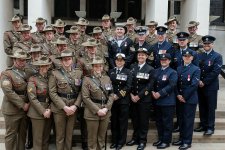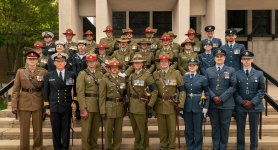Good morning all. I see the cat's well among the pigeons.

It was good to see the Canadian representation. But generally you are seeing this from the point of view of the Canadian soldier. That wasn't the point of view of the international community. They recognized the Mounties. They recognized the Kiwis and Aussies, the Aussies in particular. Thsy generally didn't comment on the Canadian contingent. I suspect because they didn't see it as a contingent. The leading effort was the Commonwealth. I further suspect that the assumption was that there was a large ANZAC contingent and a collection of other Commonwealth contingents. The commentators I was watching, British ones, didn't mention them at all. As I said, they did note the Mounties and the ANZACs.
By not parading in DEUS you missed an opportunity to sell Canada, and the Canadian Army, to billions of people. Including your own country. Especially new Canadians, many of whom come from the Commonwealth.
Once I figured out what I was looking at I could start picking out individual regiments and eventually concluded that all of the non-Anzacs, the other half of the Commonwealth element following the RCMP, were all Canadians. But even I had difficulty finding the Calgary Highlanders and distinguishing them from the ASHoC and the other Highlanders. In all honesty realization dawned when I saw a trooper in DEUs and realized he was wearing a KOCR badge. The shame of it. Recognizing the KOCR before I found my own Highlander.
One other thought. Our esteemed leader, in expressing the nations condolences, at pains to reflect that he was speaking for most Canadians. Not ALL Canadians but most Canadians. This is a true statement but made politically necessary by a Quebec that declined to honour Her Majesty's passing in the manner of other provinces. Their right and no complaint.
But by having a contingent dressed in Ceremonials you looked more British than Canadian. You effectively hid the Canadians in plain sight. And this with a government and a nation that are ambivalent towards the monarchy, the Brits and the Army.




